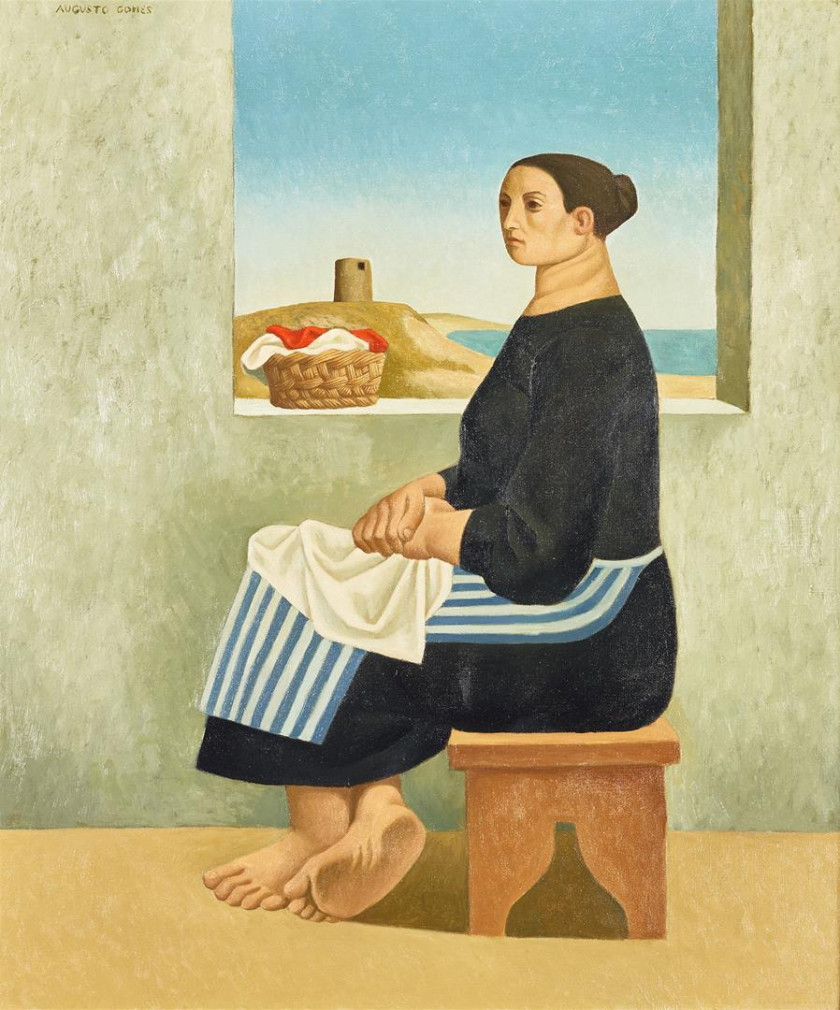Mulher sentada [Sitting woman]
painting


s.d.
Oil on canvas
88,7 x 75 cm
Augusto Gomes, born in Porto in 1910, divided his activity between painting and teaching, besides producing ceramics, stained glass, tapestries, illustrations, engravings, and theatre scenography.
Since his early works, in the 1930’s, popular figures have dominated his work, bringing him closer to the neo-realist movement which in the following decade became established in Portugal. Throughout his career, more abstract and allegorical themes emerged (visible in works in which he depicted masks, doves, and undefined landscapes) or even paintings with a more surrealist character. Nevertheless, his portraits of people emanating a sober strength are a constant presence.
Throughout his formal experiments in the 1930s and 1940s, Augusto Gomes abandoned a more decorative drawing, and the modelling of the figures flattened out. The drawing tends to acquire a different prominence in the structuring of form, denoting an approximation to Picasso, Cézanne and Gauguin.
Mulher Sentada [Sitting Woman], although not dated, is formally similar to some of his works from the 1960s. The robust, serene figure of a seated woman centres the composition, framed by a window opening onto an exterior space that in itself mimics the framing of the canvas. The economy of colour, between blues, browns and whites, easily combines the two planes, enlivened by the red note in the basket on the windowsill, by the rhythm of the stripes on her apron, and by the whites that brighten and create connections between different levels of depth. Everything in the economy of the work contributes towards a psychological portrait of the woman: the sobriety in the construction of the space, in the figure and in the colours converge towards the depiction of a woman of the people, in whose strength and serenity the conveyed sense of dignity is based.
Luísa Cardoso